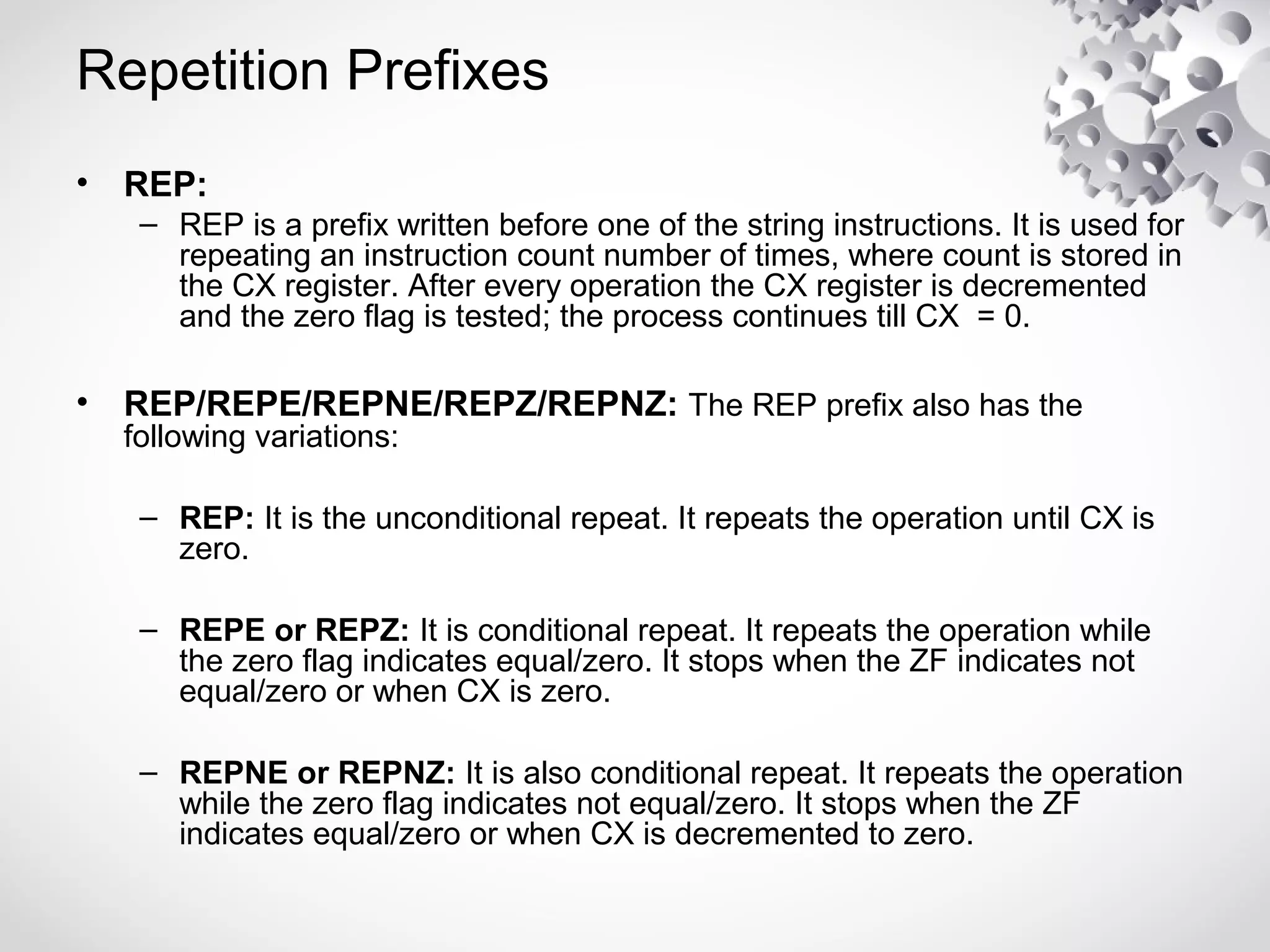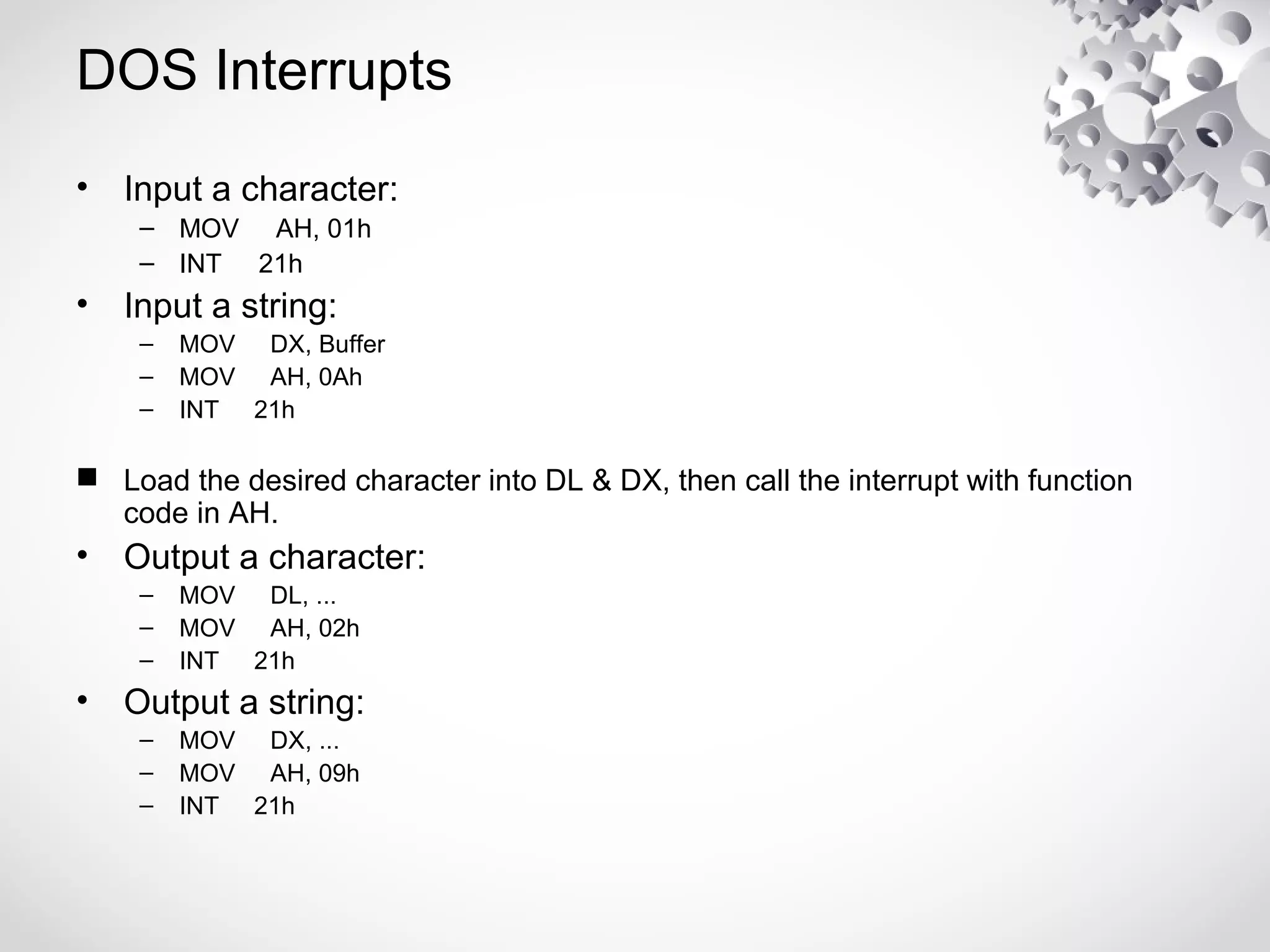The document summarizes the general purpose registers on the x86 architecture. It describes the common uses of registers like EAX, EBX, ECX, EDX, ESI, EDI, and EBP. It also covers special purpose registers like EIP and flags. Additionally, it provides an overview of the stack and how it is used to store function parameters, local variables, and return addresses. Finally, it discusses some simple instructions for math, logic, jumping, strings, and manipulating the stack.

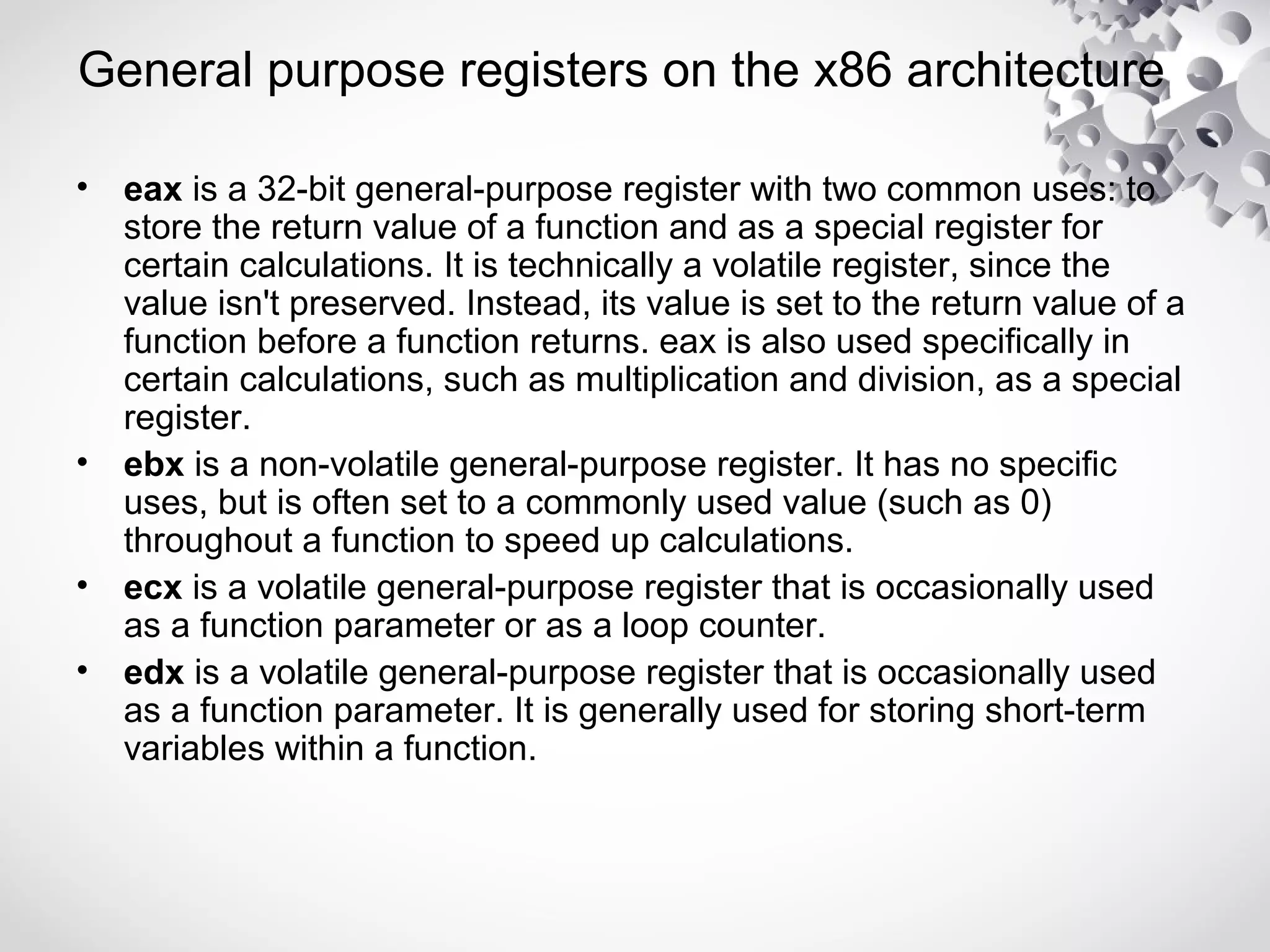
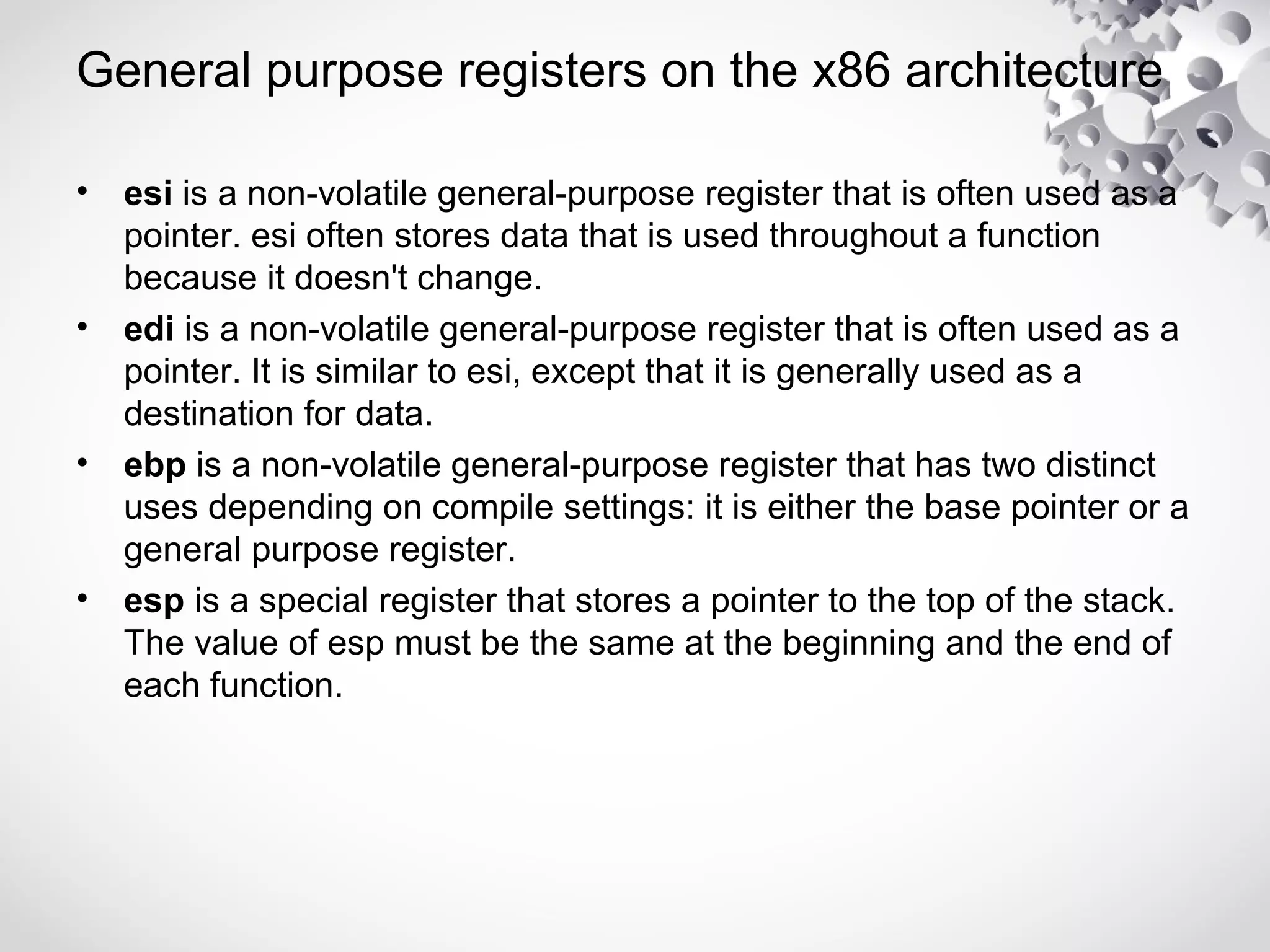
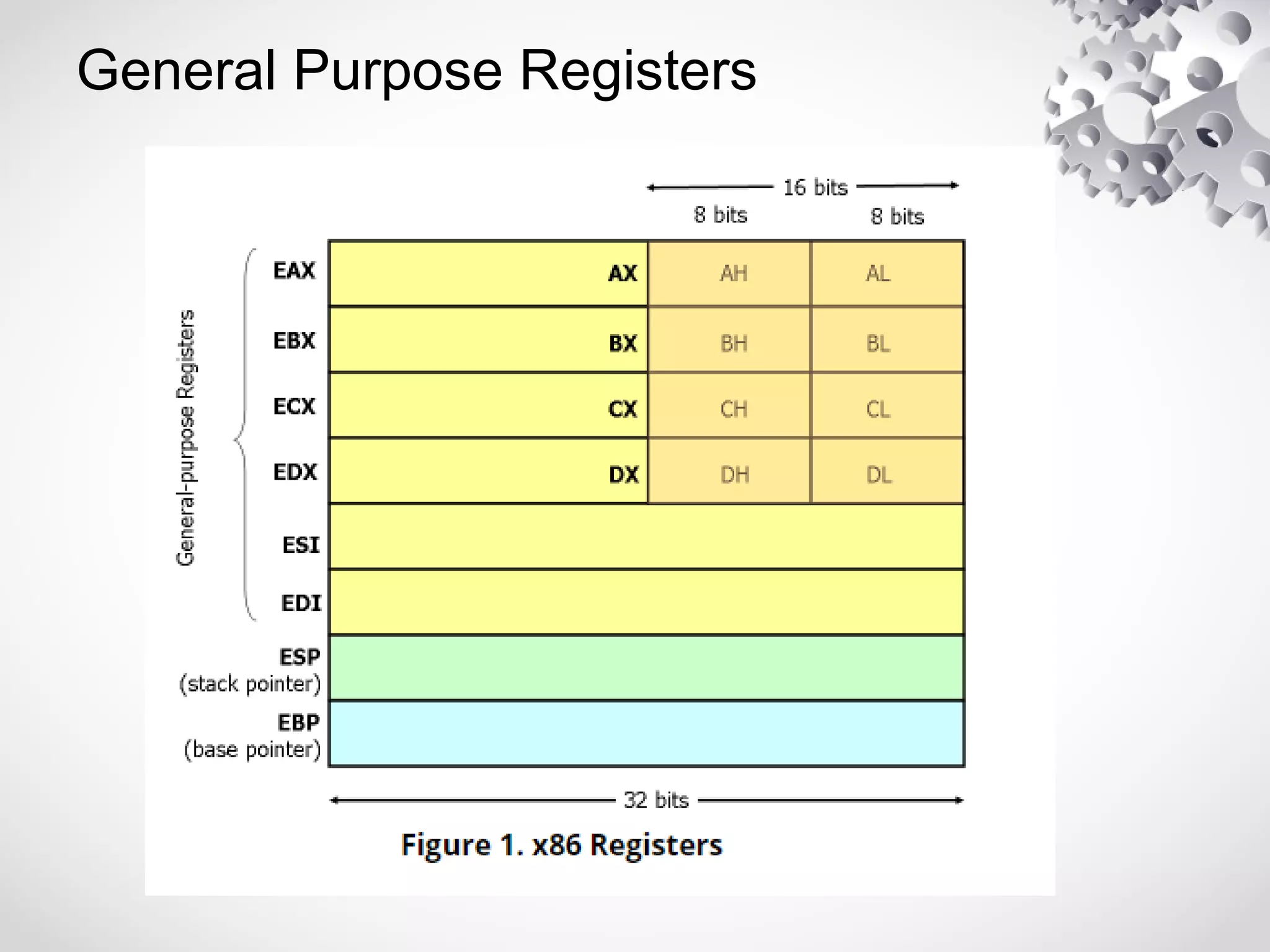
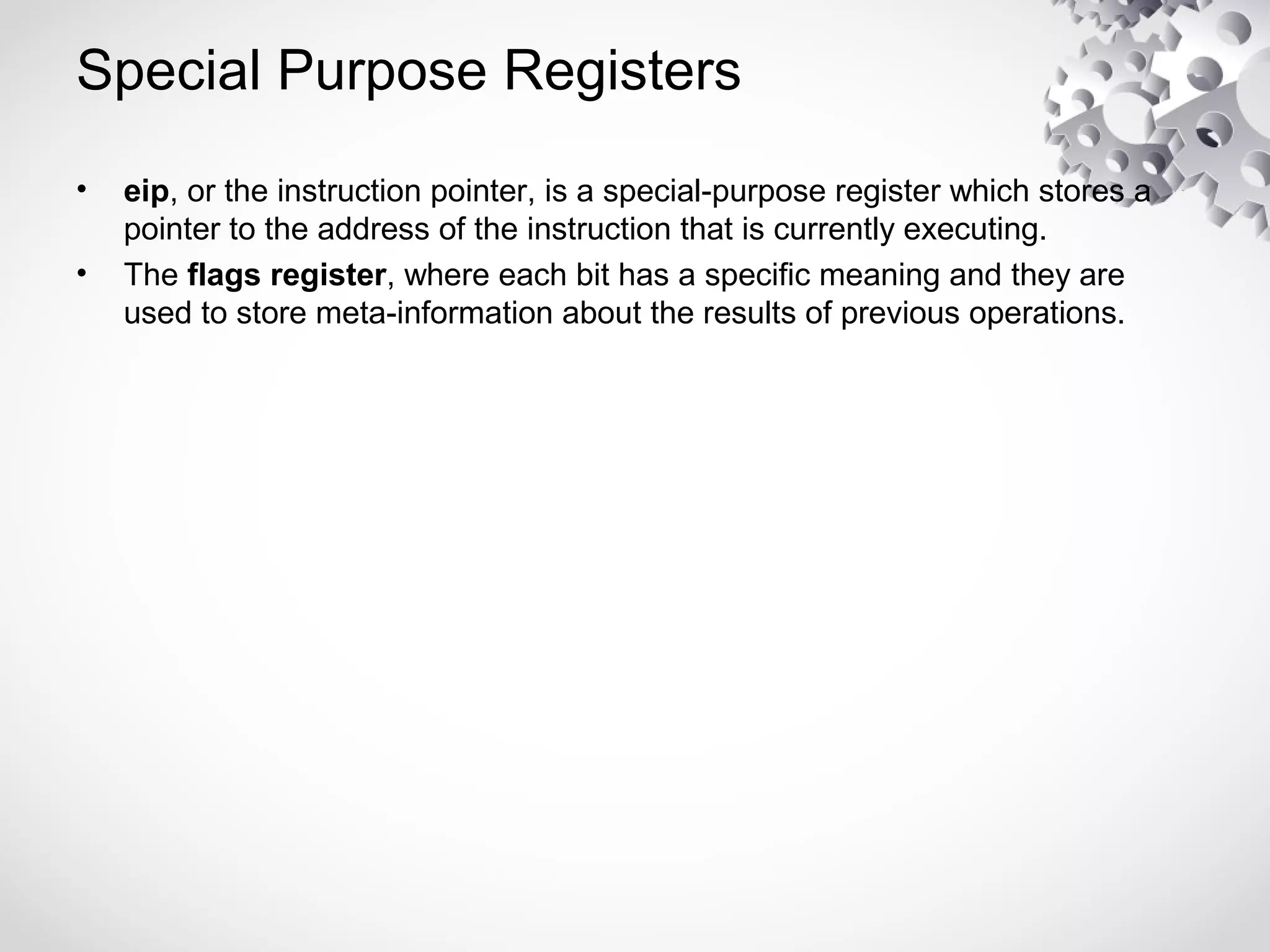

![Simple Instructions
• Pointers and Dereferencing
– eax -- is the value stored in eax
– [eax] -- is the value pointed to by eax
• Doing Nothing
– nop is short for "no operation" and it does nothing.
• Moving Data Around
– mov can move data between a register and memory, two registers, or a
constant to a register. movsx and movzx are special versions of mov
which are designed to be used between signed (movsx) and unsigned
(movzx) registers of different sizes.](https://image.slidesharecdn.com/assemblylanguage-180226103324/75/Assembly-language-7-2048.jpg)
![Simple Instructions
• lea (load effective address)
– lea is very similar to mov, except that math can be done on the original
value before it is used. The "[" and "]" characters always surround the
second parameter, but in this case they do not indicate dereferencing.
– lea is generally used for calculating array offsets, since the address of
an element of the array can be found with [arraystart + offset*datasize].](https://image.slidesharecdn.com/assemblylanguage-180226103324/75/Assembly-language-8-2048.jpg)
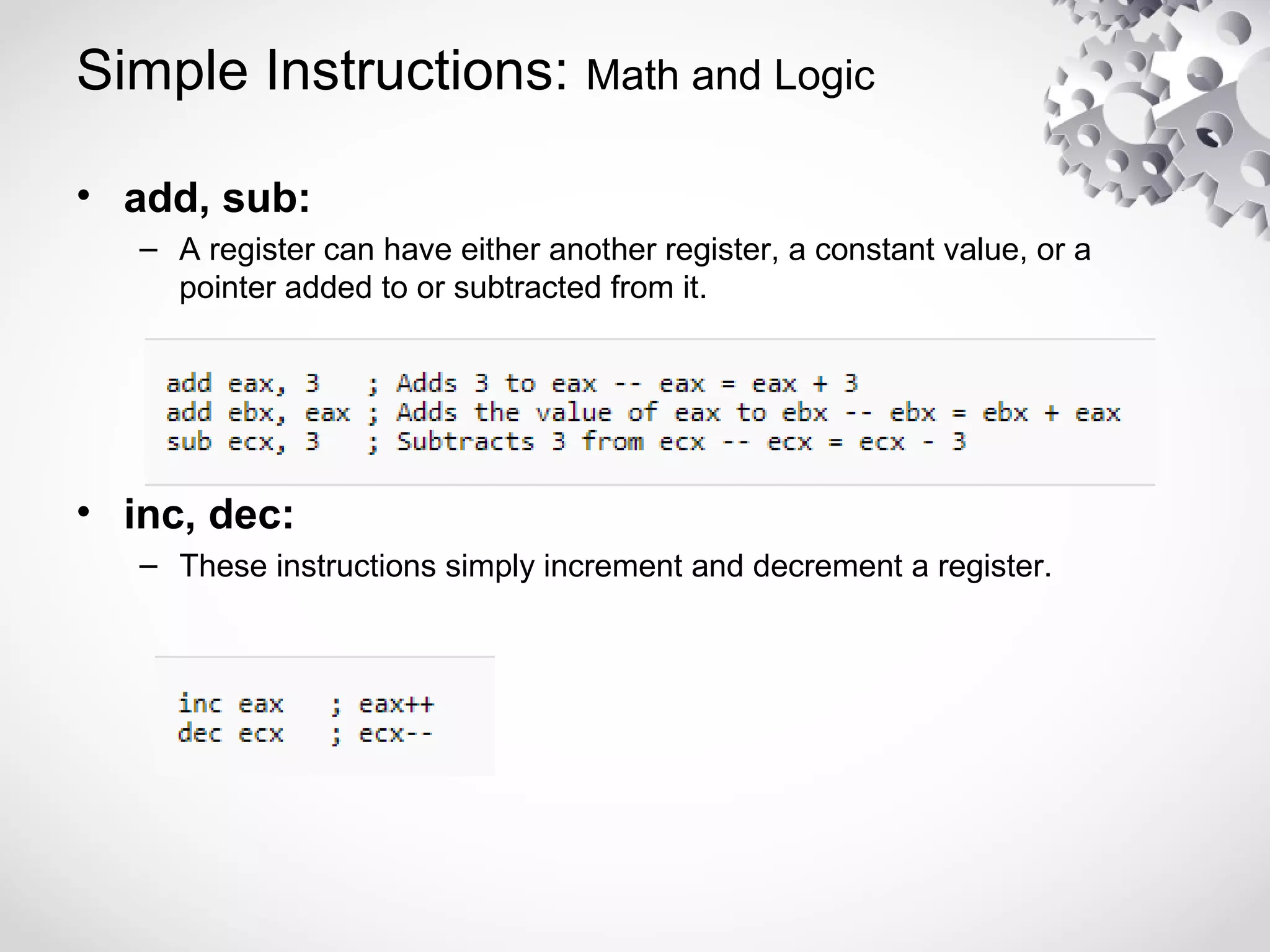
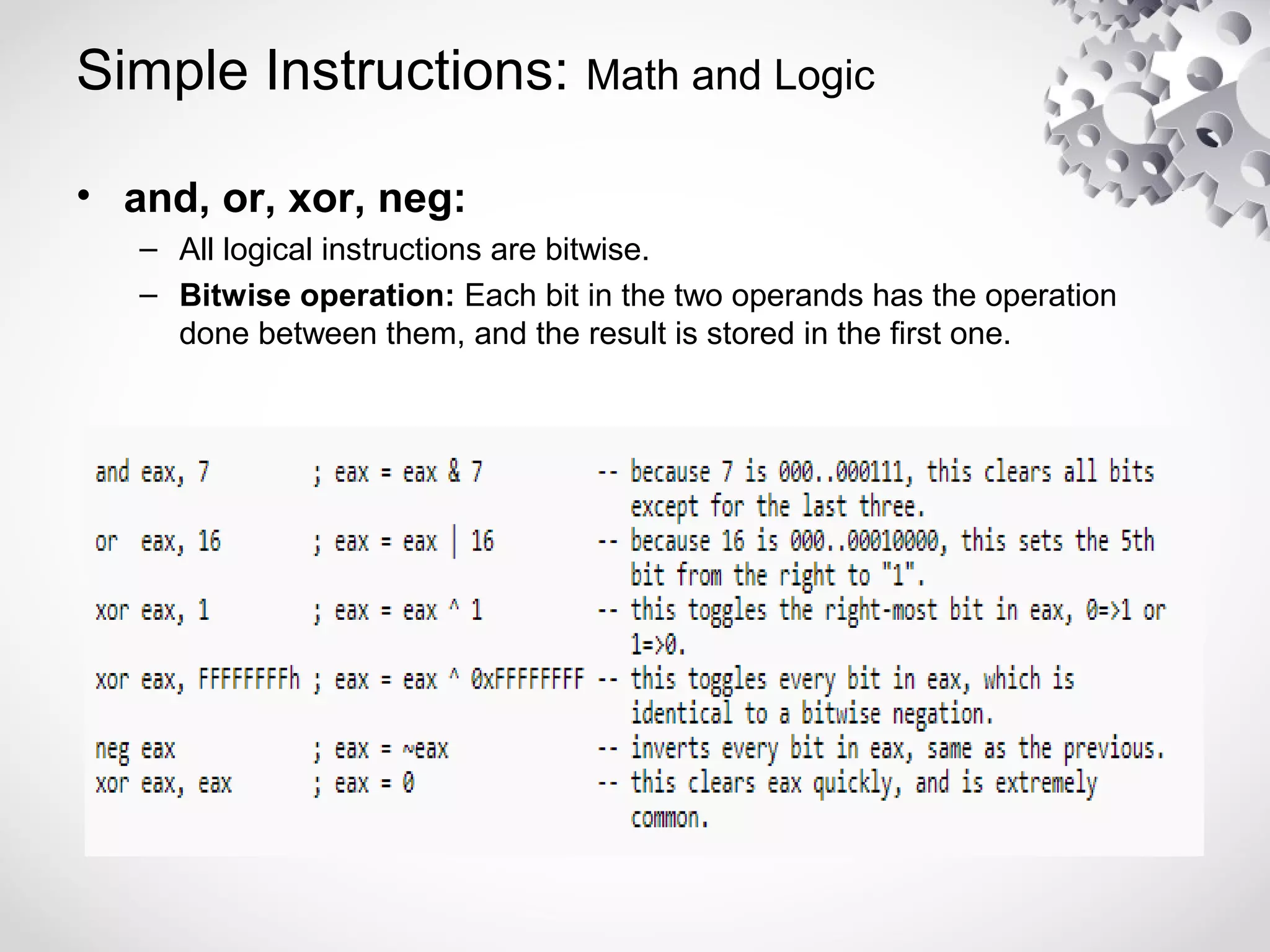
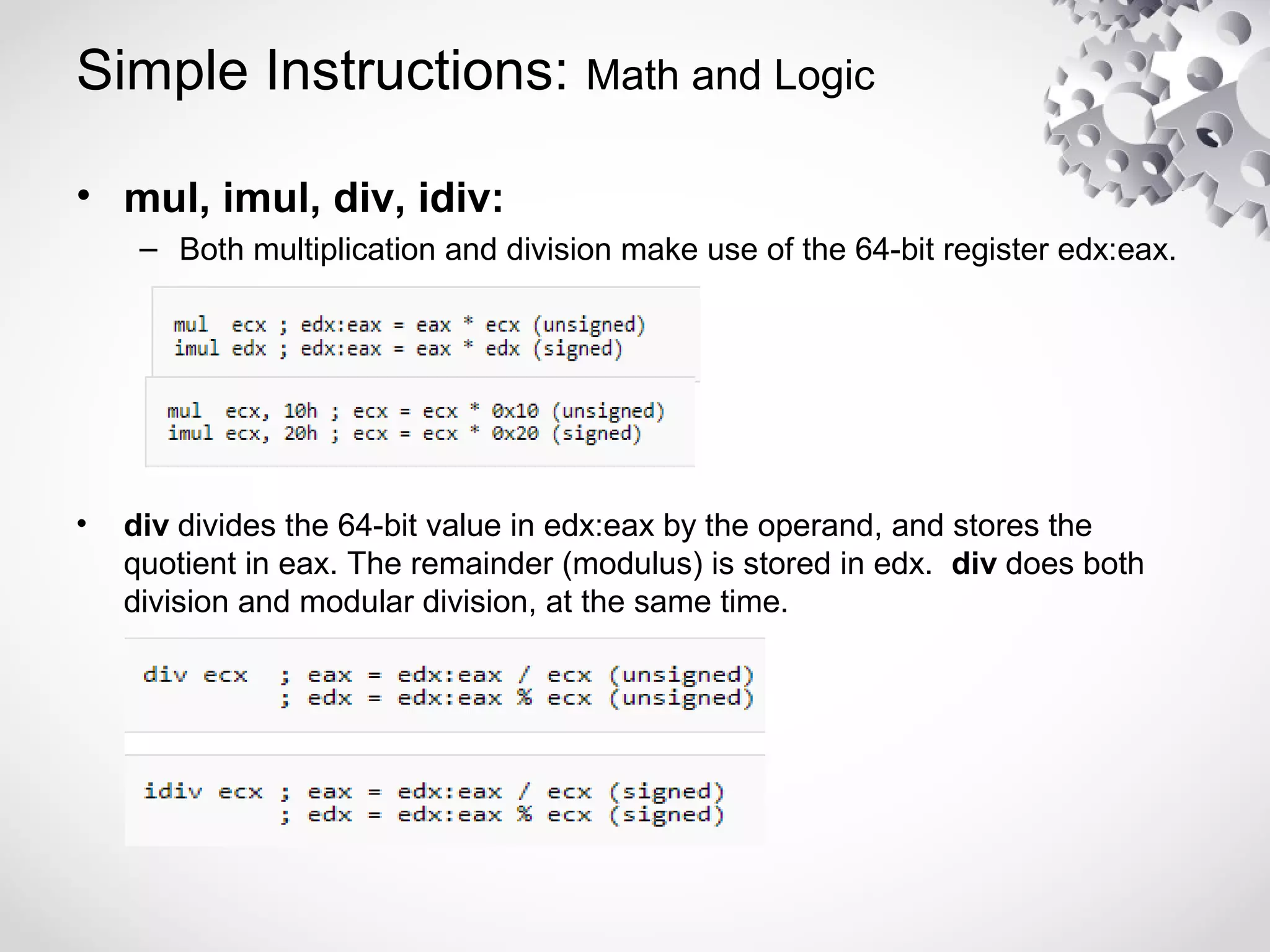
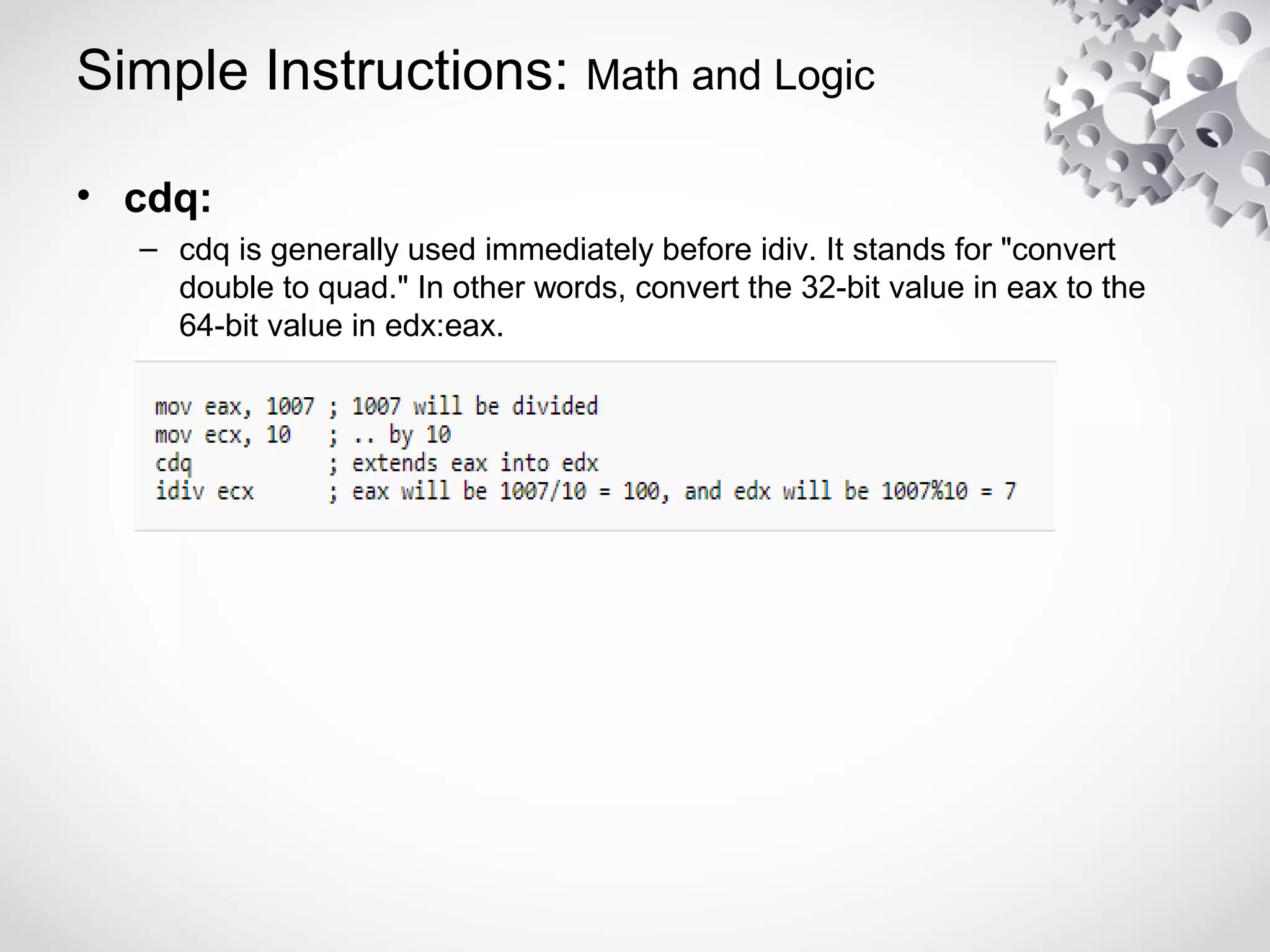
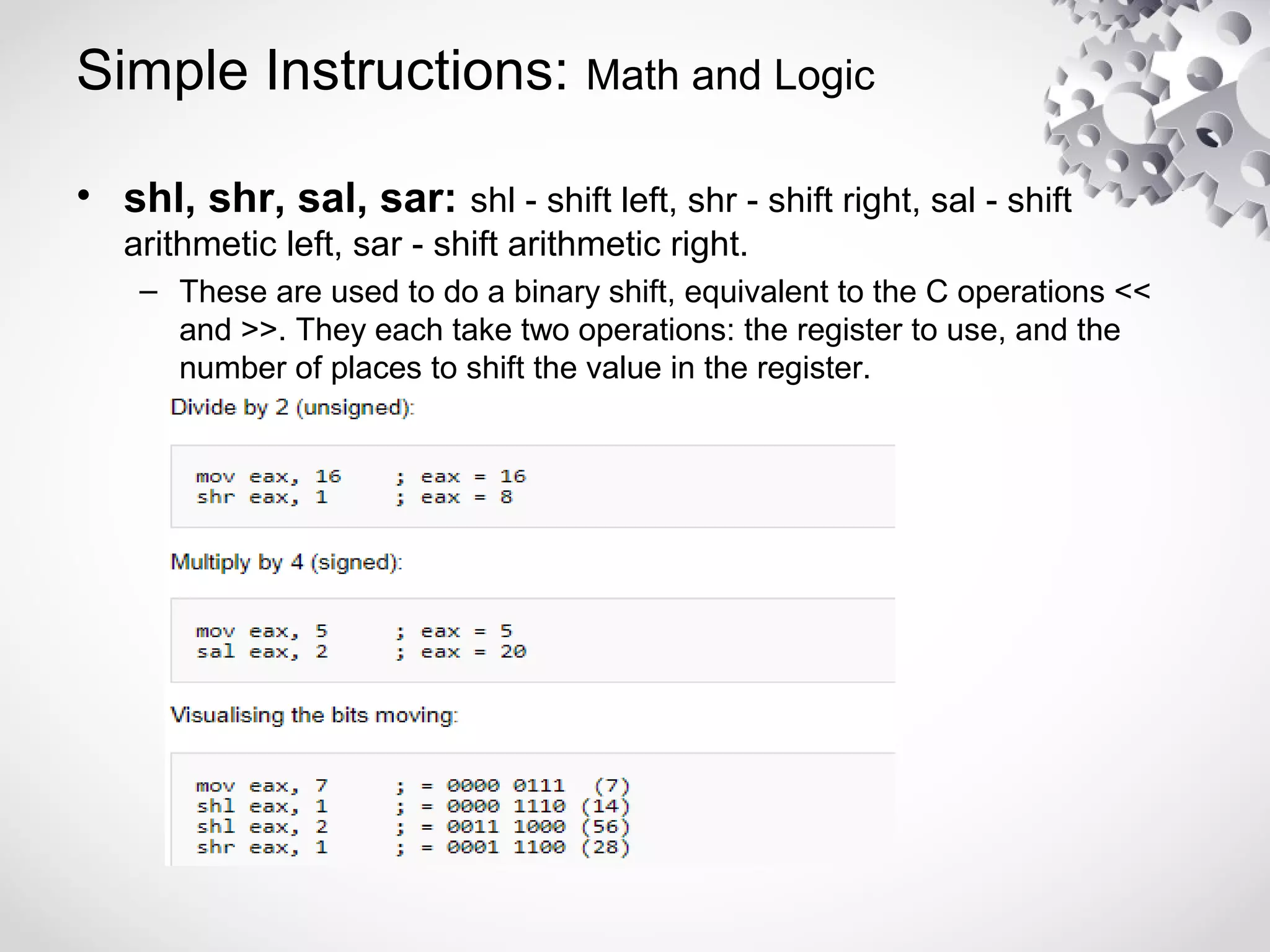
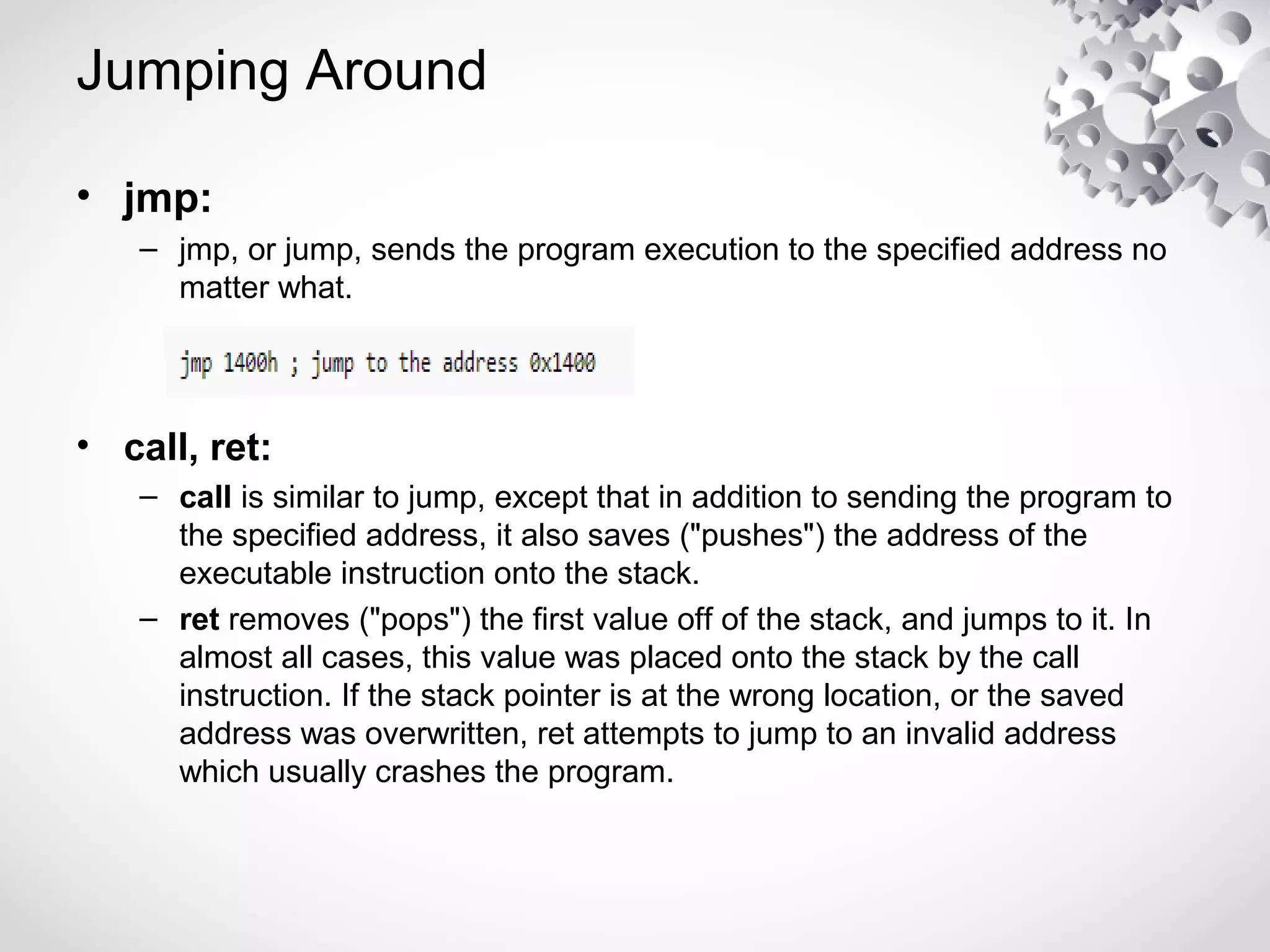
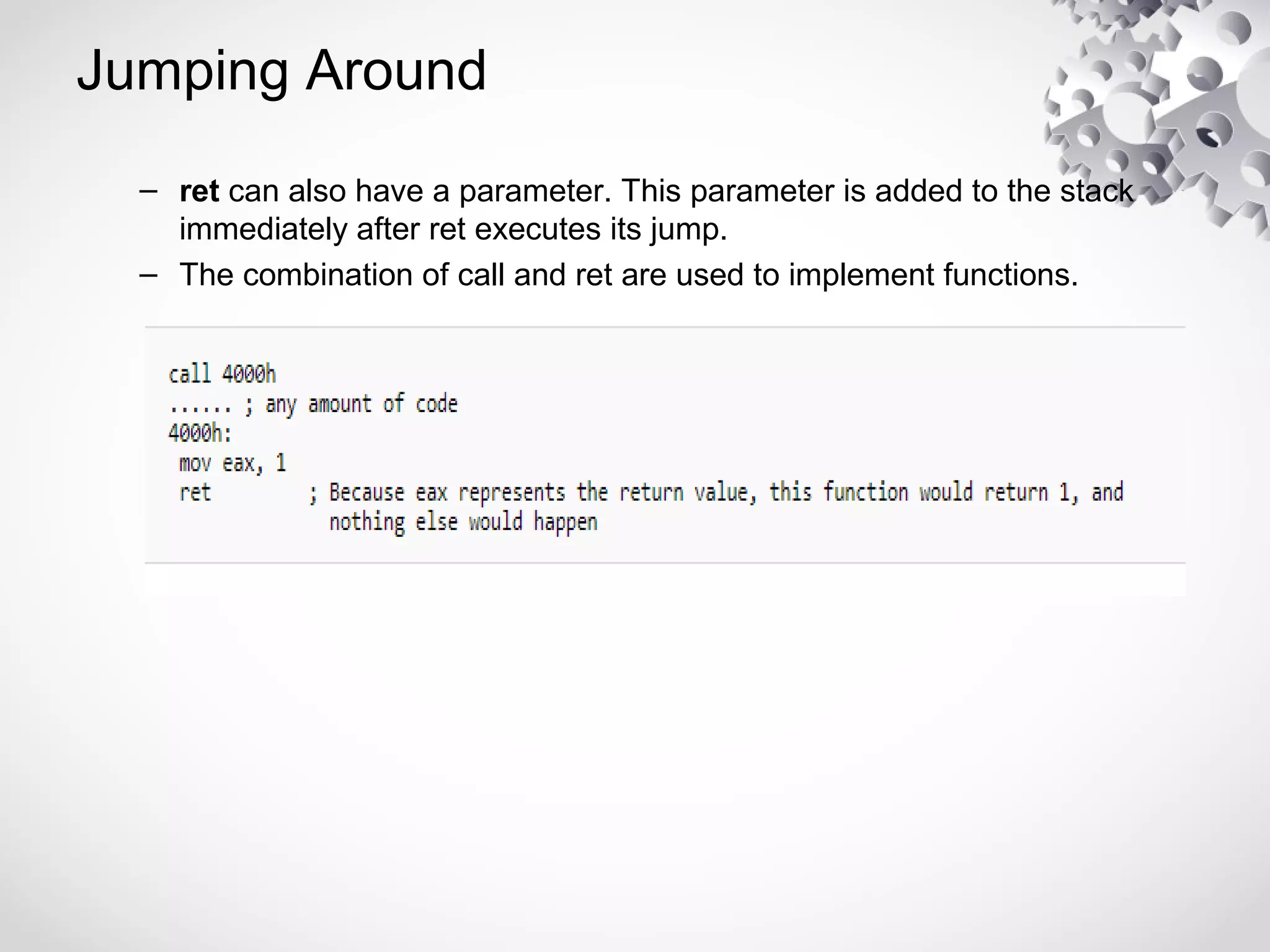
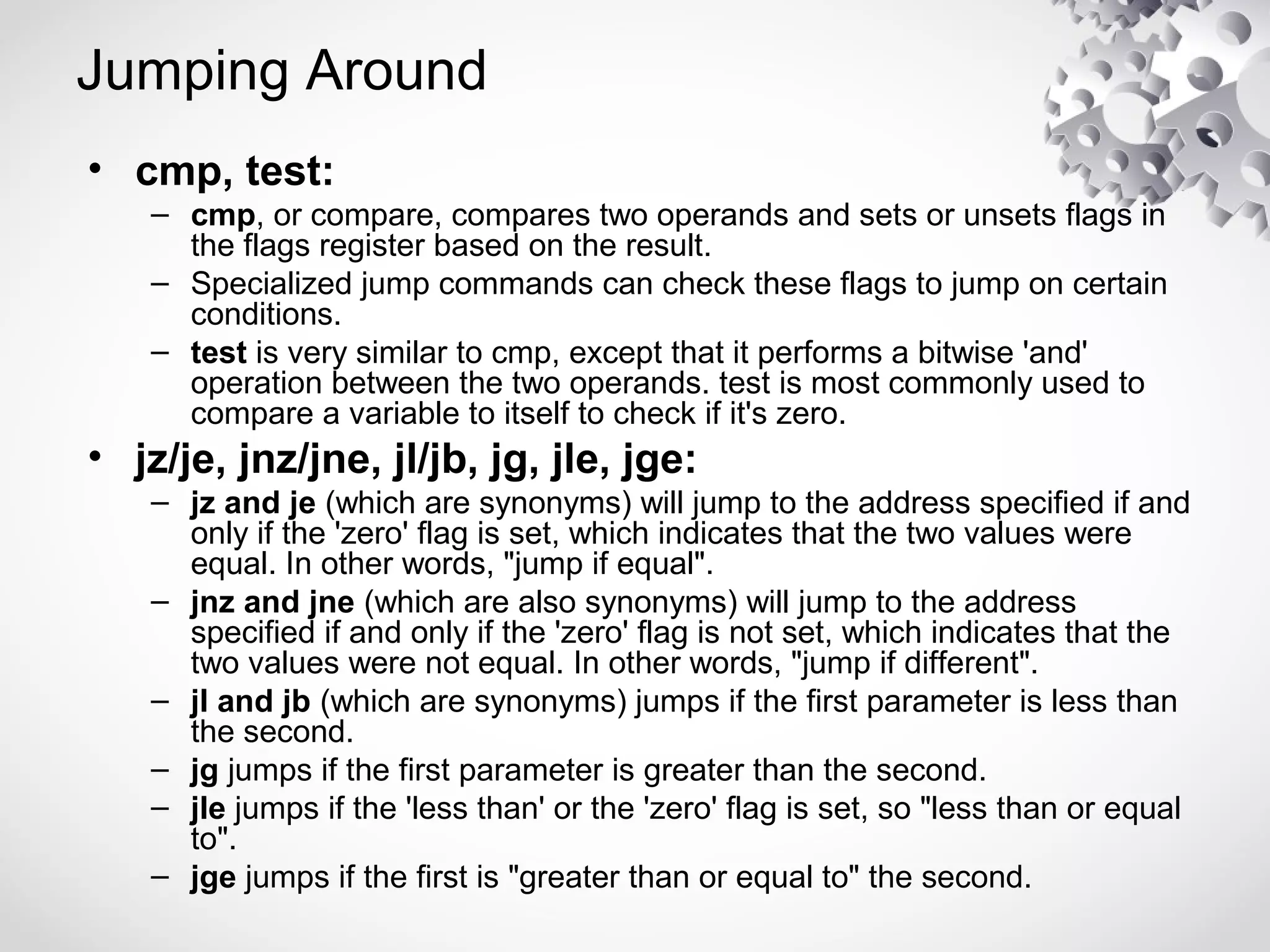
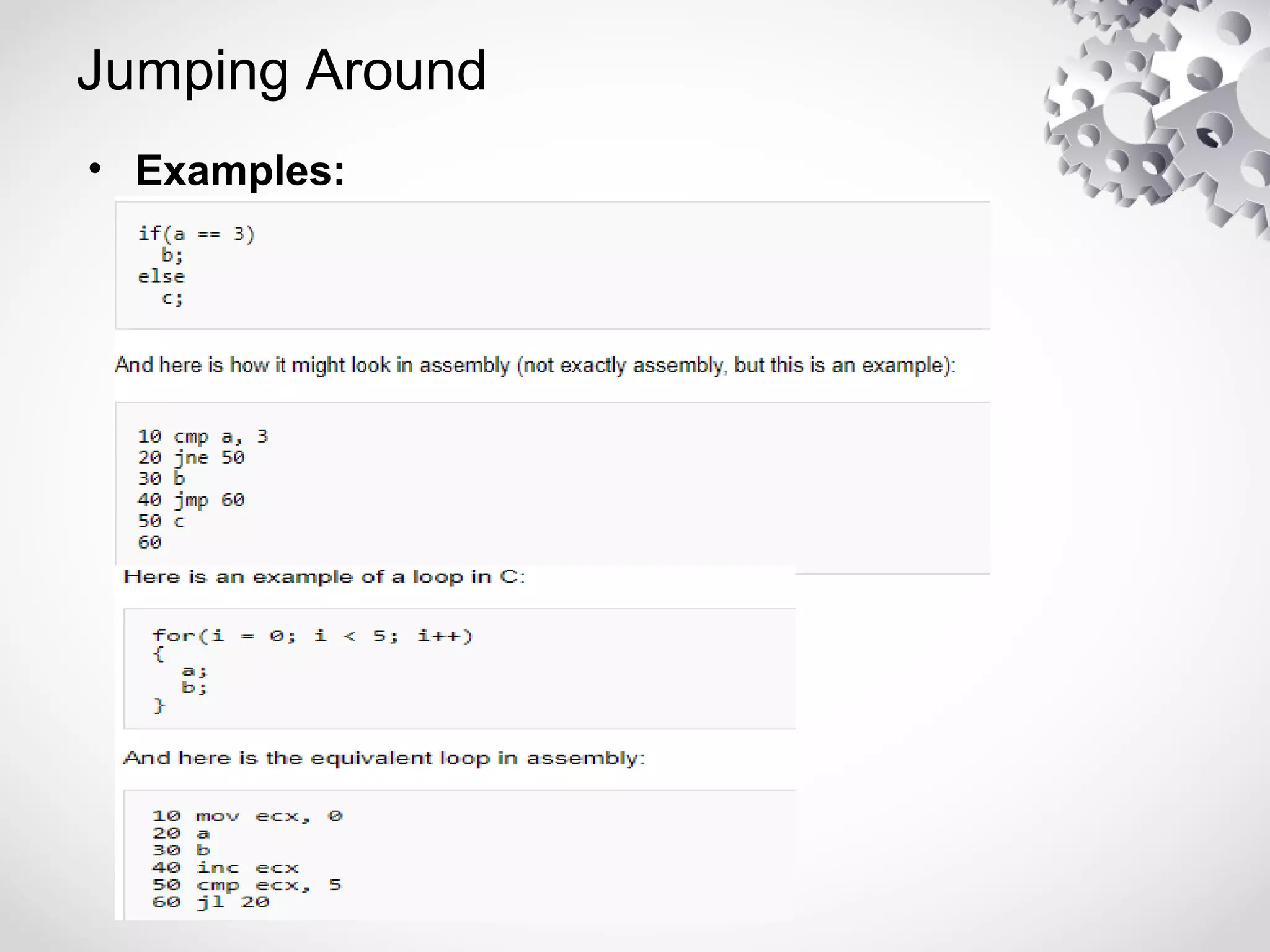
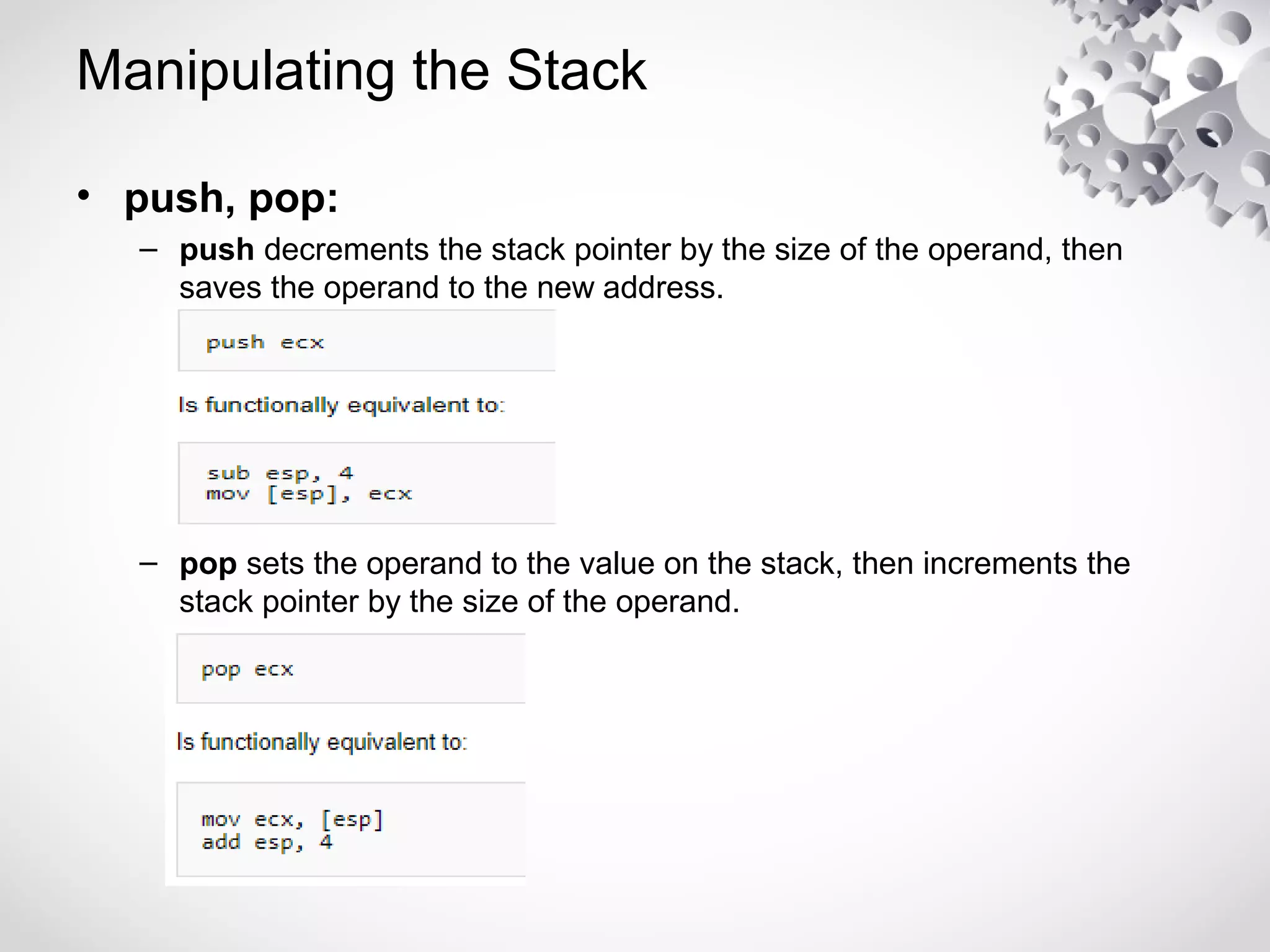
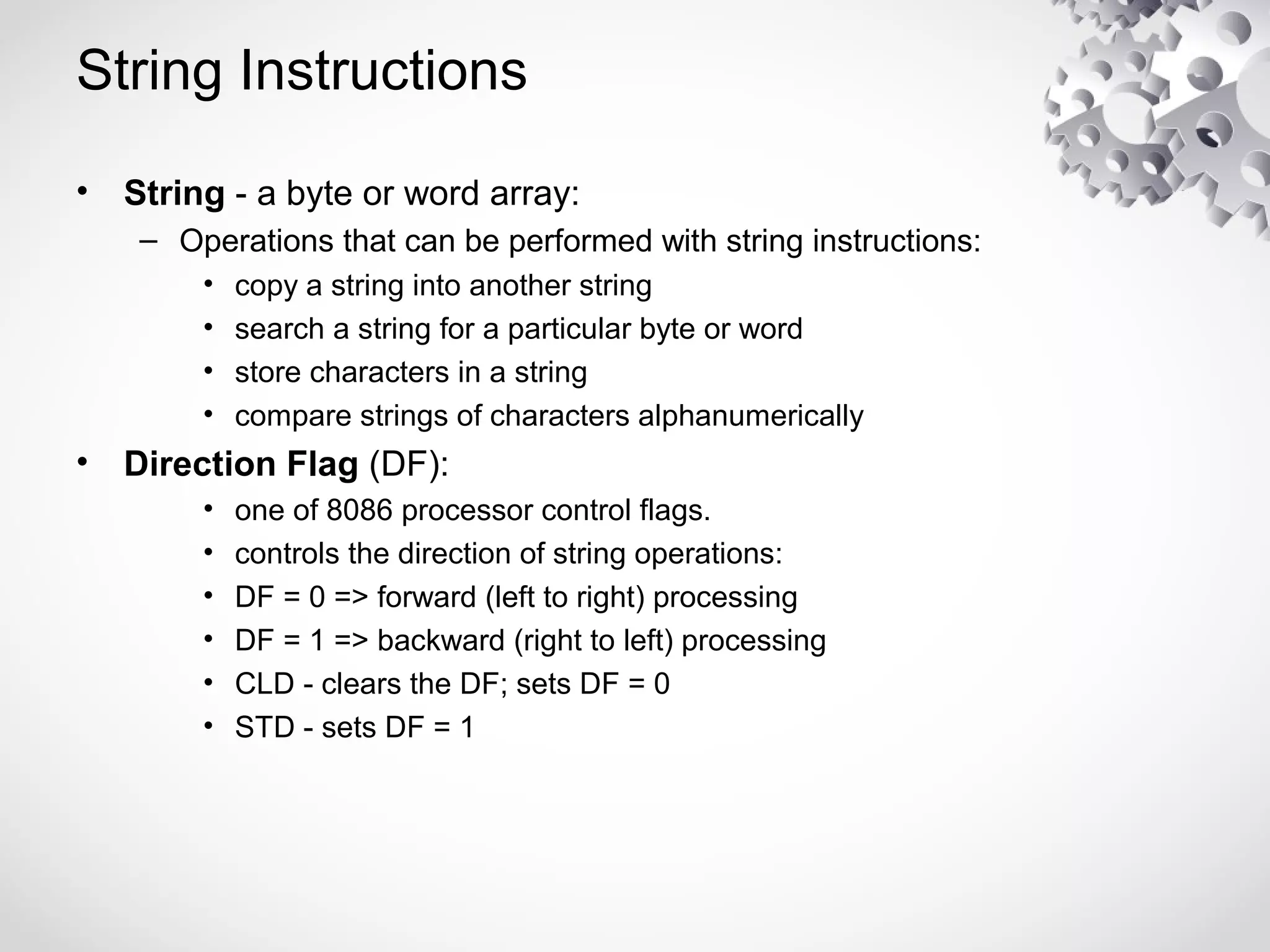
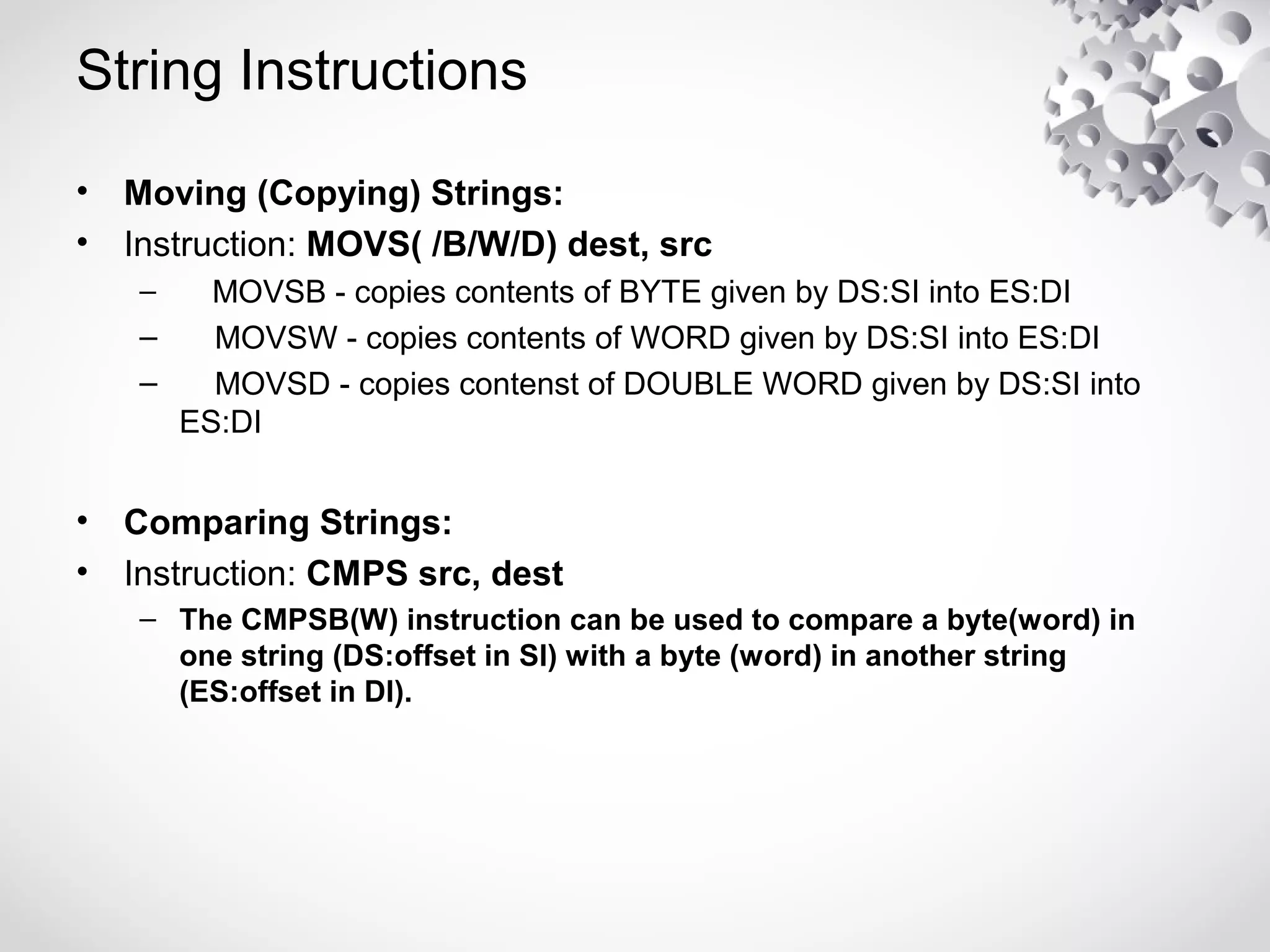
![String Instructions
• Scan String:
• Instruction: SCAS <String>
– SCAS(/B/W) compares a byte in AL or a word in AX with a byte or word
pointed to by DI in ES.
• load String:
• Instruction: LODS <String>
– This instruction copies a byte (word) of string from the location pointed to by
SI.
• Store String:
• Instruction: STOS <String>
– The STOS instruction copies a byte (word) from AL (AX) to a memory
location stored in [ES:DI].](https://image.slidesharecdn.com/assemblylanguage-180226103324/75/Assembly-language-21-2048.jpg)
